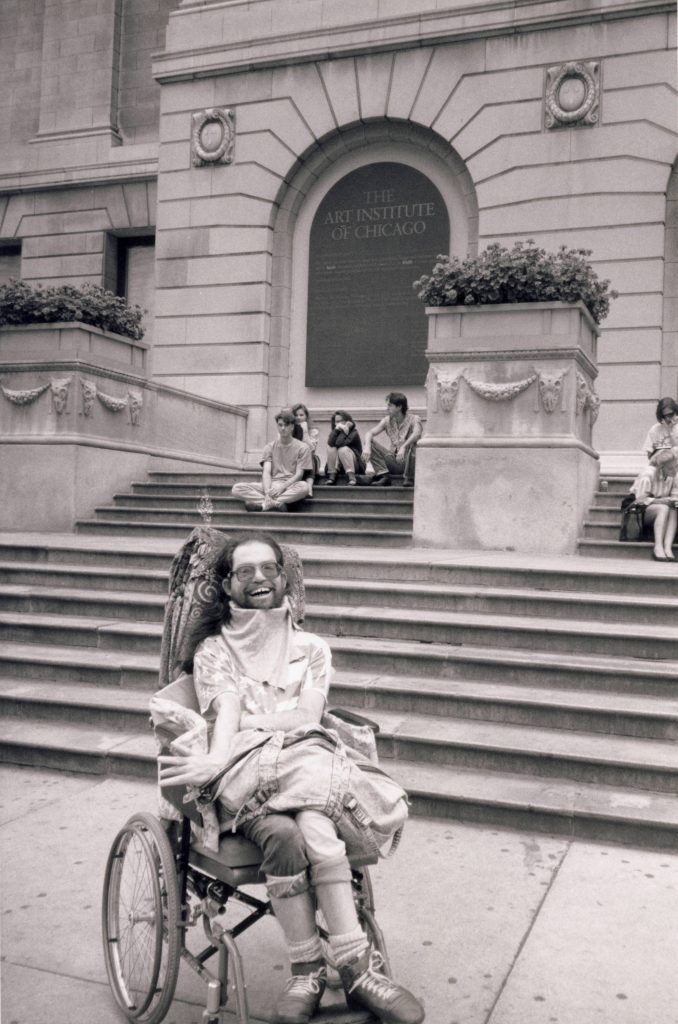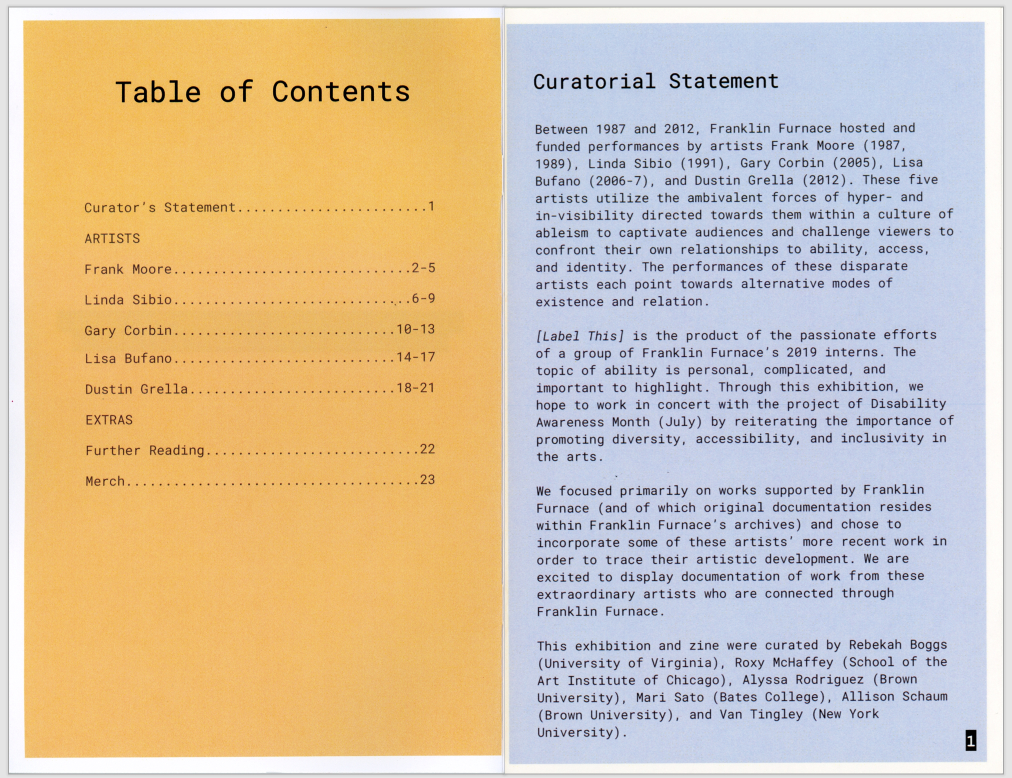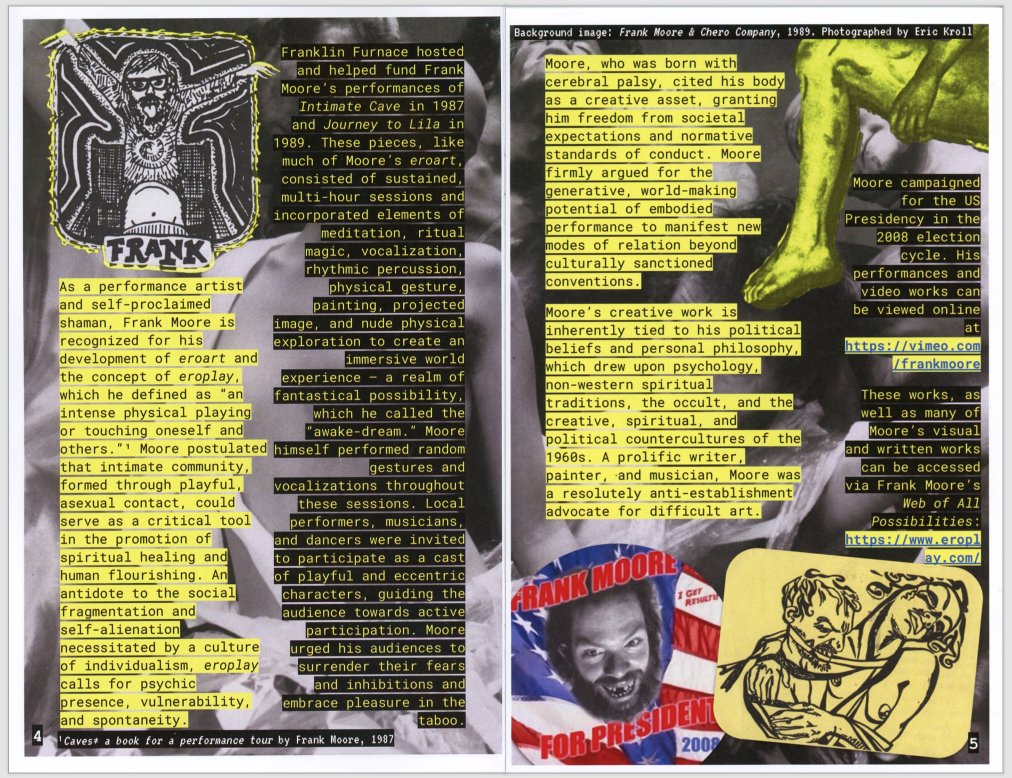BAMPFA presents the paintings of Frank Moore — a performance artist, poet and so much more
Opening Jan. 25, exhibition focuses on the lesser-known body of work by the Berkeley countercultural activist who was also a playwright and filmmaker.
Sponsored by Berkeley Art Museum and Pacific Film Archive
Jan. 19, 2023, 8:38 a.m.

If you spent any time at Sproul Plaza on the UC Berkeley campus during the 1970s, you may have encountered a young man in a wheelchair with a mischievous smile and a long pointing stick strapped to his head of unruly brown hair. If you approached this man, you might have seen a colorful sign on his lap with a simple invitation: “Talk to Me.”
This was Frank Moore, one of the most distinctive and distinguished artists to emerge from Berkeley’s counterculture scene during the 1970s and ’80s. A Berkeley original, Moore (1946–2013) was known by his many friends and admirers as a prodigious poet, painter, playwright, performance artist, musician, filmmaker, shaman, presidential candidate, and public access television impresario. He was all of these things and more, all while living with a disability that limited his speech and motion but left his creative spirit unbound.
Today, Moore’s legacy lives on in his voluminous archives of art, film and written work, held at UC Berkeley’s Bancroft Library. This year, Bay Area audiences will have a fresh opportunity to discover a portion of that material starting Jan. 25, when the Berkeley Art Museum and Pacific Film Archive unveils Frank Moore / MATRIX 280: Theater of Human Melting — the first museum exhibition dedicated to this extraordinary artist. Unlike previous exhibitions of Moore’s work, Theater of Human Melting focuses specifically on his paintings, a comparatively under-recognized aspect of his creative practice that is overdue for rediscovery.

Born and raised in San Bernardino, Moore spent his early adulthood at the Brotherhood of the Spirit commune in western Massachusetts and among radical communities in New Mexico, where he wrote articles for progressive publications under the pen name Unicorn. After relocating to the Bay Area to attend the San Francisco Art Institute, Moore became widely known for provocative performance art presentations that incorporated nudity and eroticism as well as shamanic practices and time-based elements.
In 1978, Moore converted a vacant storefront on Bancroft Avenue into The Theater of Human Melting, a workshop where he developed performances, wrote screenplays, and mentored fellow artists. Constantly experimenting with new forms of expression, he brought his creative vision to public access television in the early 2000s, producing a weekly arts program that later transitioned into a web series. Like many Berkeleyans of his generation, Moore was also active in radical politics throughout his life — most notably as a write-in candidate for President in 2008, when he ran on a platform of “radical love.”
The latest installment in the museum’s MATRIX program for contemporary art, the exhibition of paintings at BAMPFA offers a rare glimpse at Frank Moore’s prolific output as a painter, which is less widely known than his performance art but no less central to his practice.
Working with a paintbrush strapped to his forehead, Moore used oil paint to render evocative still lifes, landscapes, and portraits, ranging from anonymous nudes to pop culture icons like Batman, Darth Vader, and Frankenstein. Twenty-nine of these remarkable works will be presented at BAMPFA, including two works that were recently acquired for the museum’s permanent collection — one of which is a portrait of musician Patti Smith, Moore’s close friend and collaborator.

“We’re delighted to present the first museum exhibition of Frank Moore right here at his hometown museum, which will reintroduce our audiences to an artist whose singular vision was shaped by this vibrant creative community,” said BAMPFA’s Executive Director Julie Rodrigues Widholm.
“Given Berkeley’s proud history as the birthplace of the disability rights movement, it’s especially meaningful for us to revisit the work of a Berkeley artist who was unbound by his physical limitations, and whose spirit of artistic innovation and inclusivity continues to inspire.”
Theater of Melting is guest-curated by Vincent Fecteau and Keith Wilson, both working artists with deep connections to the Bay Area, who will present a curator’s talk at the museum on Jan. 25 at 5:30 p.m.
To provide additional context on Moore’s life and work, the curators have chosen to feature the experimental video Let Me Be Frank, playing on a loop in the gallery. Although Moore is credited as the director, the segment was produced posthumously by his family as the opening sequence for a video series based on his autobiography, “Art of a Shaman.” Let Me Be Frank serves as a boisterously joyful introduction to Moore’s creative vision, driven by his passionate belief in the ability of human beings to connect.
Of related interest, selected papers from the Frank Moore Archive will be on display in the exhibit cases on the 3rd floor at The Bancroft Library, UC Berkeley, Feb. 1–April 21.
Here is the original article from the Berkeleyside




